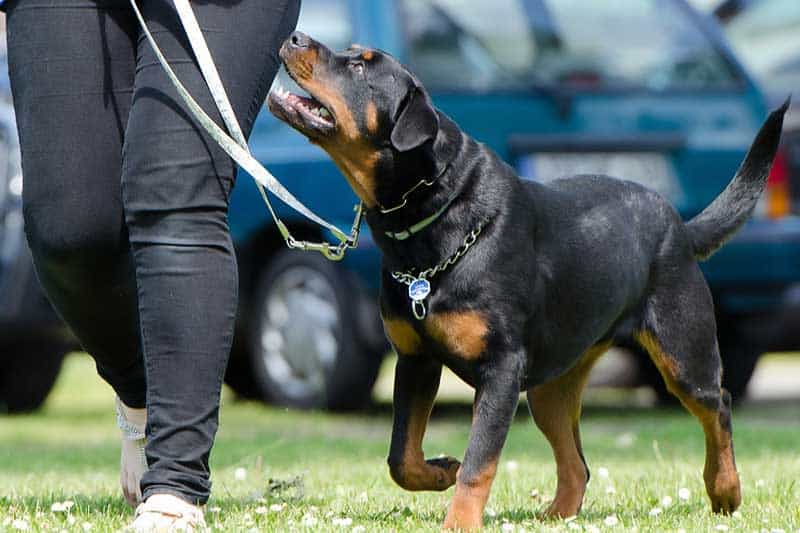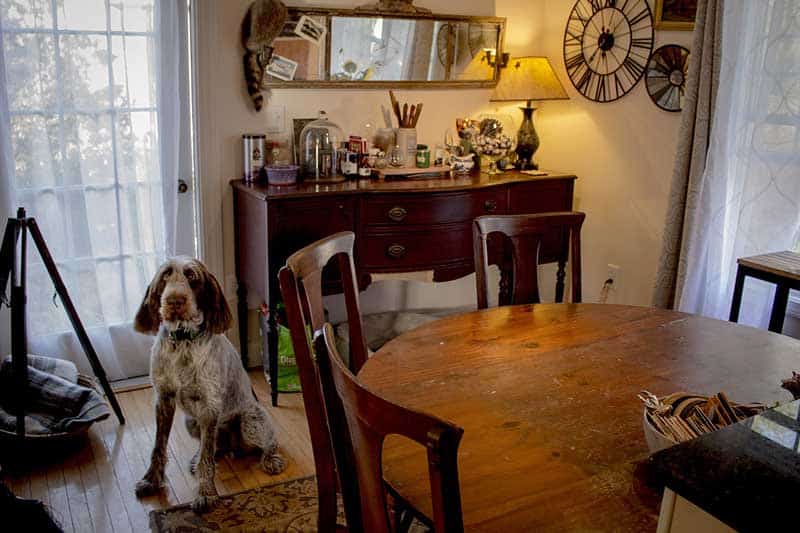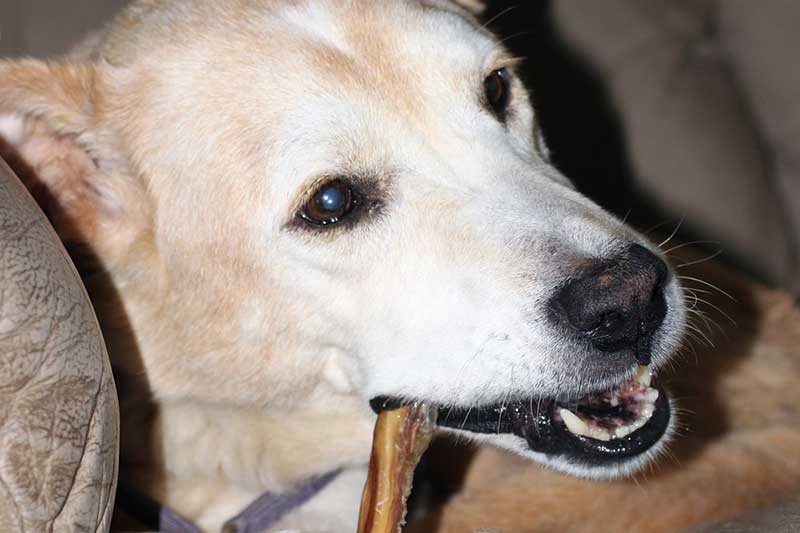This page may contain affiliate links. If you click and buy, we might get a small commission at no cost to you.
If you are a dog owner, you might have experienced coming home to a scene where your wooden furniture is marked with dog teeth or partially destroyed. Not only can this be a costly property repair but your dog can also risk swallowing splinters when they chew on wood furniture. So, why do they chew on wood and what can you do to prevent it? Read on to learn these answers, including some helpful tips on how to stop a dog from chewing on wood furniture.
How to stop a dog from chewing on wood furniture – 10 tips
Here are 10 ways to prevent your dog from chewing away at your wood furniture. If you want to learn more about why they exhibit these behaviors, be sure to read to the end of the article.
1. Give your dog lots of playtime
Dogs are sociable by nature and some breeds require a lot of playtime and exercise to expend their energy. They could be chewing on wood furniture because they are understimulated, bored, or missing you when you are gone for hours at work.
Try your best to take plenty of time before you head to work to interact with your dog, play with them, or take them on jogs or long walks. Repeat this after you get back from work so they have a routine of when they can expend their energy.
2. Provide daytime care
If you don’t have time to play with your dog as often as they need, it can be helpful to find daytime care for them. A trusted caretaker can stop by and take your dog on walks or play with them outside. This will help give your dog the stimulation they need and distract them from chewing up things in the house.
3. Purchase some chew toys
If your dog just enjoys chewing or it’s instinctual for their breed, you can give them an alternative to your furniture with chew toys. Avoid harmful toys, such as real bones that can splinter and damage your dog’s organs. Instead, try durable chew toys made from non-toxic hard nylon that offer the dental hygiene benefits of chewing without the risks.
There are also chew toys specially designed for teething puppies. These are toy sets that are sized appropriately for small dogs or puppies. Whenever you see your dog or puppy chewing on the furniture, offer them the toy as a substitute.
4. Visit a veterinarian
If your dog is chewing on wood because of dental issues, it may be time to visit the vet. Veterinary dentistry services are available to provide your dog with teeth cleanings. They can also examine if additional problems are irritating your dog or that might be causing anxiety.
You might also want to consult with your vet to see if you are providing your dog with the right nutrients and amount of food. Sometimes dogs will chew on wood out of hunger or when they feel they need added nutrients in their system.
5. Try basic dog training techniques

There are ways to apply basic dog training techniques to teach your dog not to chew on the furniture. Start by saying a firm “No” whenever you see your dog chewing. Remain consistent in the way you voice your disapproval and encourage everyone in your home to do the same.
Offer your dog a treat, praises, and pats once they stop chewing to solidify your message. Make sure only to give them a treat after you say no and they stop. This way they can make the association that chewing won’t earn them treats. Avoid punishing your dog because this can cause different reactions or anxiety that makes the chewing worse.
6. Use dog chewing deterrents
Spraying dog chewing deterrents on your wooden furniture, dry walls, or wood trims can prevent your dog from chewing on them. You can purchase bitter apple sprays or make your own at home. Just combine apple cider with vinegar. Other potential dog chewing deterrents include:
- Cayenne pepper pastes
- Bitter essential oils
- Lemon, lime, or orange juice mixed with vinegar
Dog chewing deterrents work best when combined with the behavioral training previously explained.
7. Install a dog camera
Installing a dog camera with two-way audio can let you monitor your pet when they start to chew and let them hear your voice when you say no. It can also be a good way to interact with your dog throughout the day so you keep them mentally stimulated and distracted from chewing furniture. You can even purchase a dog camera with a treat dispenser, so you can continue reinforcing the habit of not chewing even when you are far away.
8. Put up a barricade
Suppose your dog still continues to chew on the wood furniture regardless of the methods you’ve tried. In that case, you might want to consider barricading them from the rooms where they can do damage. You can purchase indoor pet gates to place between doors or walkways.
9. Try crate training
Crate training isn’t necessarily a punishment as it comes with plenty of benefits and keeps your dog safe from the risks of chewing wood. A crate-trained dog will also be easier to travel with if you want to bring your furry friend on trips. Dogs can learn to see the crate as a safe space and sanctuary when you provide a bed and enough space for them to turn around and lie down.
If you want to give them more space than a crate offers, you can also purchase larger playpens that you can place indoors. There are also pet playpens that let you modify them into different shapes.
10. Stop playing fetch with sticks
If you frequently find wooden sticks outdoors to play fetch with your dog, they may see wood as a toy. This can cause them to seek out wooden furniture to chew on and interact with when in the home. Instead, play fetch with a ball. Also, make sure to remove all sticks from your backyard so your dog isn’t tempted to chew on them
Why do dogs chew on wood furniture? – 4 reasons
Understanding why your dog is chewing on wood furniture can help you find the most effective way to prevent them. Below are the four main reasons why your dog may be acting this way.

1. Boredom
If your dog is bored or understimulated, they can turn towards chewing wooden furniture to pass the time. This is especially true if your dog is left alone at home for extended amounts of time and needs more physical exercise or mental stimulation.
2. Anxiety
Obsessive wood chewing is a common symptom of anxiety in dogs. When they are upset or nervous, they can end up taking it out on the wooden furniture. Anxiety can be caused by recent transitions or separation anxiety.
3. Dental issues or teething
Adult dogs with dental issues can cause them to chew obsessively. Teething puppies will also chew on wood to relieve the discomfort or pain of teething, especially when they are between 4 to 30 weeks of age.
4. Breed instinct
Sometimes it’s just instinctual in particular dog breeds to chew things around them. For example, hunting dogs and retrievers are bred to grab things with their mouth instinctively.




